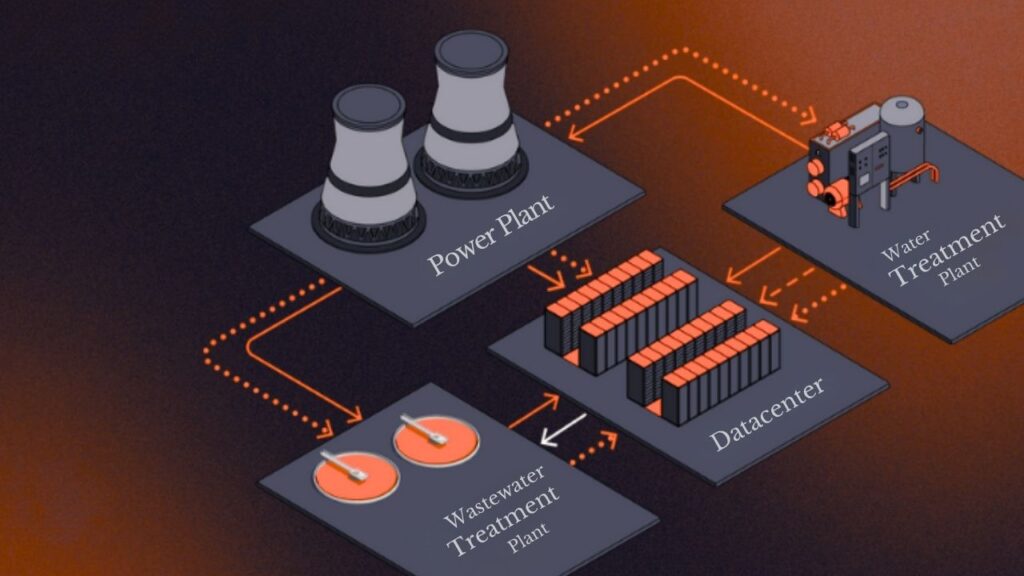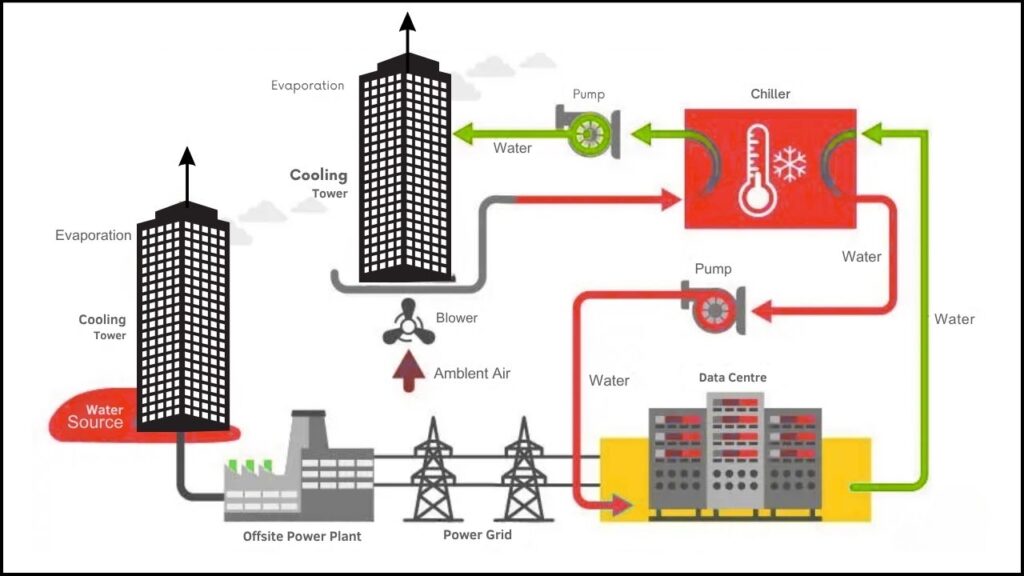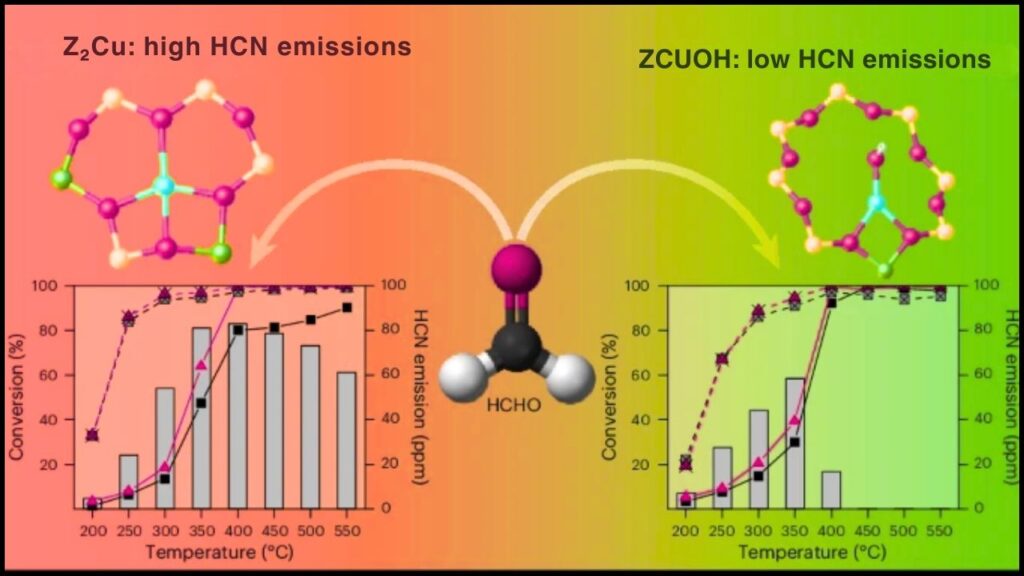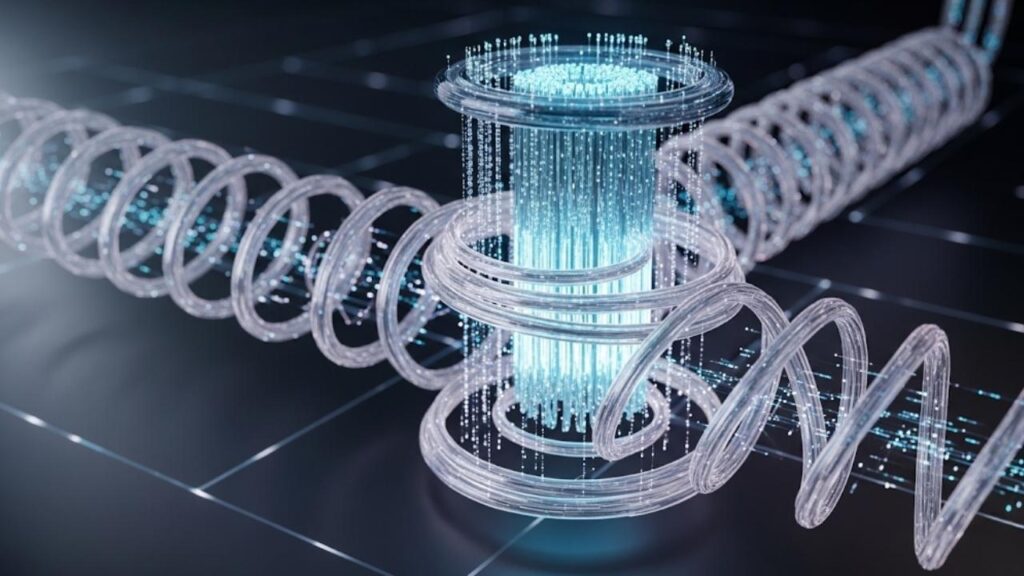In today’s digital world, nearly every click, video stream, email, and AI-powered task relies on the invisible workhorses known as data centers. These facilities power the “cloud” and are growing rapidly, fueled by everything from social media to AI and machine learning. Yet, while most people are aware of the electricity these centers use, very few understand the immense amounts of water that keep these server farms operating.

The topic of data center water consumption is becoming a focal point in environmental discussions around digital infrastructure. Why is this issue so important now? Because, behind every online search or streamed movie, there’s a very real physical resource—clean water—being quietly used, often in parts of the world already suffering from water shortages. Both consumers and professionals need to understand the consequences as well as the practical choices available to curtail this “hidden cost” of modern technology.
Table of Contents
The Cloud’s Hidden Cost
| Topic | Data/Facts & Insights |
|---|---|
| Global Annual Use | About 560 billion liters of water by data centers yearly. Projected to reach 1,200 billion liters by 2030. |
| US Water Footprint | Large data centers can use 2-5 million liters per day. National total for cooling and related processes—up to 800 billion liters/year. |
| India’s Growth | Rising estimates: 150+ billion liters expected by 2025 due to booming cloud/5G adoption and digital economy initiatives. |
| Tech for Cooling | Mostly evaporative (swamp) cooling; 80% of water used is lost to evaporation, not returned locally. |
| Corporate Response | Pledges for “water positivity” by 2030 from major tech players; investment in reclamation and efficiency tech. |
| Affected Professions | Engineers, utilities, environmental policy experts, urban planners, sustainability professionals. |
| Emerging Solutions | Air cooling, water recycling, heat reuse, careful siting of new centers, policy change. |
The rapid growth of cloud computing and AI is reshaping how we live—and challenging how we use our planet’s most precious resource: clean water. While the hidden cost of data center water use is a complex, global problem, practical solutions exist. With responsible technology choices, thoughtful government regulation, transparent reporting, and public awareness, we can ensure our digital future is sustainable for both people and the planet.
What Are Data Centers, and Why is Water So Critical?
A Hidden World Powering Everyday Life
A data center is a highly secure facility filled with racks of servers—super-strong computers that store, process, and transmit digital information worldwide. From schools and hospitals to banking apps and TikTok, almost every aspect of modern life touches a data center. These machines are on all the time, producing enormous heat as they work.
Why is cooling vital? If servers overheat by even a few degrees, they can slow down or even crash. The industry’s preferred cooling method uses large amounts of water to move heat away from these servers. Water cools more efficiently than air in many climates, which explains its widespread adoption.
Types of Cooling and Why Water Is Favored
- Evaporative cooling systems: These pass air and water together through cooling towers. As water evaporates, it absorbs vast quantities of heat, keeping server temperatures safe but losing much of the water in the process.
- Chilled water loops: In some centers, chilled water is pumped through pipes, cooling hot air before it’s cycled back. This can require both energy and water for “top-off.”
- When available, air cooling is sometimes used, especially in colder climates. However, it’s less effective in the hottest or densest facilities—precisely where the world’s data demand is surging.

The Scale of the Water Challenge
Let’s put things in perspective.
- One single large data center may use between 2 and 5 million liters of water every day—the daily supply for a small city.
- Across the US alone, annual data center water use linked to cooling is now estimated at up to 800 billion liters—plus even more for power plant cooling, since data centers require massive electricity.
- Globally, yearly data center water demand is around 560 billion liters—a figure that is expected to skyrocket to more than 1,200 billion liters by 2030, as AI and streaming services spread worldwide.
Examples You Can Picture
- A typical 100-megawatt data center supports the online needs of millions of people, but consumes water equal to 6,000+ households each day.
- In The Dalles, Oregon, Google’s data center took up over a quarter of the community’s entire water consumption, sparking concerns and requiring local negotiation.
Why Water Loss Is Extraordinarily High
Residential water use is cyclical: most household water ends up back in the local system after use. Data center water, on the other hand, is mainly lost for good:
- Evaporative cooling results in about 80% of water drawn being lost to the air, not returned to groundwater or rivers.
What does this mean?
- In water-scarce areas (like Arizona, parts of California, or rapidly-growing Indian cities), data centers sometimes compete directly with farms, industry, and residents for limited secure fresh water. This puts extra strain on the vulnerable and escalates conflict.
Where The Strain Is Most Severe
Regional Hotspots and Global Risks
U.S. and Europe: The U.S. houses the world’s largest data center hubs, including clusters in Virginia, California, Georgia, and Arizona. Two-thirds of centers built since 2022 are in “high water stress” locations.
- In Virginia, water demand for data centers nearly doubled between 2019 and 2023.
- Western Europe, meanwhile, struggles with tight water budgets and rising digital activity.
India and Asia-Pacific: Booming tech economies and “Digital India” ambitions have translated into exponential growth in data needs. Without careful planning, this will soon make India one of the top data center water consumers globally.
Latin America and Africa: New data hubs are being planned in tropical and semi-arid zones, often in places already facing clean water scarcity.
The Role of Artificial Intelligence (AI) and Next-Gen Computing
Why AI Raises the Stakes
Artificial Intelligence is revolutionizing every sector but also carries a much higher computing and cooling burden. The reason is straightforward: training a modern AI model (think of ChatGPT or self-driving car brains) can use more water than some communities do in a week.
- AI-related data centers often need custom cooling and operate nearly around the clock.
- Projections for the U.S. indicate a possible increase of nearly double the current data center water consumption by 2030, largely from AI and high-performance computing.
This trend is global and is driving the urgency for better water management.
Practical Solutions: How Industry and Regulators Are Responding
1. Smarter & Sustainable Cooling Technologies
Air Cooling
Some data centers are shifting to air-only systems in cool, dry climates. This reduces water use but often increases electricity demand, presenting its own environmental challenges.
Water Recycling and Reuse
- Grey water loops: By using treated (non-drinkable) water for cooling, centers avoid tapping municipal supplies.
- Heat capture: Some facilities are now providing excess heat for neighborhood heating—saving energy overall.
Thermal Storage
Innovations like nighttime ice storage help balance resource use and grid demand.
2. Smarter Siting and Planning
- Careful location choice: Data center operators are collaborating with urban planners to pick sites with secure, renewable water sources or access to reclaimed water.
- Regulatory action: In water-stressed regions, governments have started mandating impact assessments and, in some cases, capping the amount of drinkable water that centers can access.
3. Corporate Commitments and ESG Goals
Major tech firms—Google, Microsoft, Amazon, Meta—have pledged to become “water positive” by 2030. This means returning more water to the environment than they consume, either through supply replenishment projects or by investing in high-efficient technologies.
4. Increased Transparency
Stakeholder and community pressure is prompting companies to disclose water use data and sustainability performance. This push for honest reporting is essential for building trust and accountability.
Who Needs to Care? Professional and Community Impacts
Engineers & Facility Managers: You are at the frontline of technology decisions—selecting water-saving systems and monitoring ongoing performance.
Utilities & Planners: Your forecasts and policies will shape regional water resilience and digital growth.
Policymakers and Regulators: You have the tools to set benchmarks for efficiency, disclosure, and future building permits.
Community and Sustainability Champions: Public input is vital. Local pushback has delayed or reshaped many proposed centers, putting real power in community hands.
Practical Tips and Steps Forward
For Industry and Operators
- Invest in the latest water-efficient cooling technology.
- Use and promote recycled water or alternative sources, especially in drought-prone regions.
- Engage transparently with communities and local government to set water consumption caps and public monitoring.
For Government & Planners
- Make water-use disclosures required for data center permits.
- Promote siting in areas with surplus or under-utilized non-potable water—rather than already stressed aquifers.
- Support research and incentives for ultra-water-efficient facilities.
For Individuals & Communities
- Be aware: Each online action requires real-world energy and water—spread the word!
- Advocate for solutions: Choose digital services that post clear environmental metrics. Support public policies for sustainable digital infrastructure.
America’s Largest Power Grid Feels the Strain as AI Energy Demands Keep Growing
Hitachi Develops Metaverse Platform for Nuclear Power Plants: Transforming the Future of Energy
Energy-Efficient Quantum Amplifier Developed Without Loss in Performance
FAQs About The Cloud’s Hidden Cost
Why do data centers need so much water?
Data centers contain thousands of servers working day and night, producing intense heat. Water-cooling is currently the most efficient solution to prevent overheating, but it necessitates massive quantities of fresh water—often not returned to local supplies.
Can data centers use less water?
Yes! Advances in air-based, hybrid, and recycled-water systems, paired with new policies and planning, can substantially reduce dependence on fresh water.
Do my everyday digital actions really add up?
Yes. From checking your email to binging a series or using AI, each action activates servers cooled with water and electricity, making every digital habit an indirect participant in this global challenge.
How are tech companies responding?
Industry giants have set public, time-bound commitments to “water positivity.” Some are already pioneering water restoration projects, more efficient data center designs, and rigorous tracking of resource usage.
Is this only a big city or rich country problem?
No. Developing nations with fast-growing digital economies are often least prepared for the rising water demands of the cloud. The risks and opportunities are global.



















